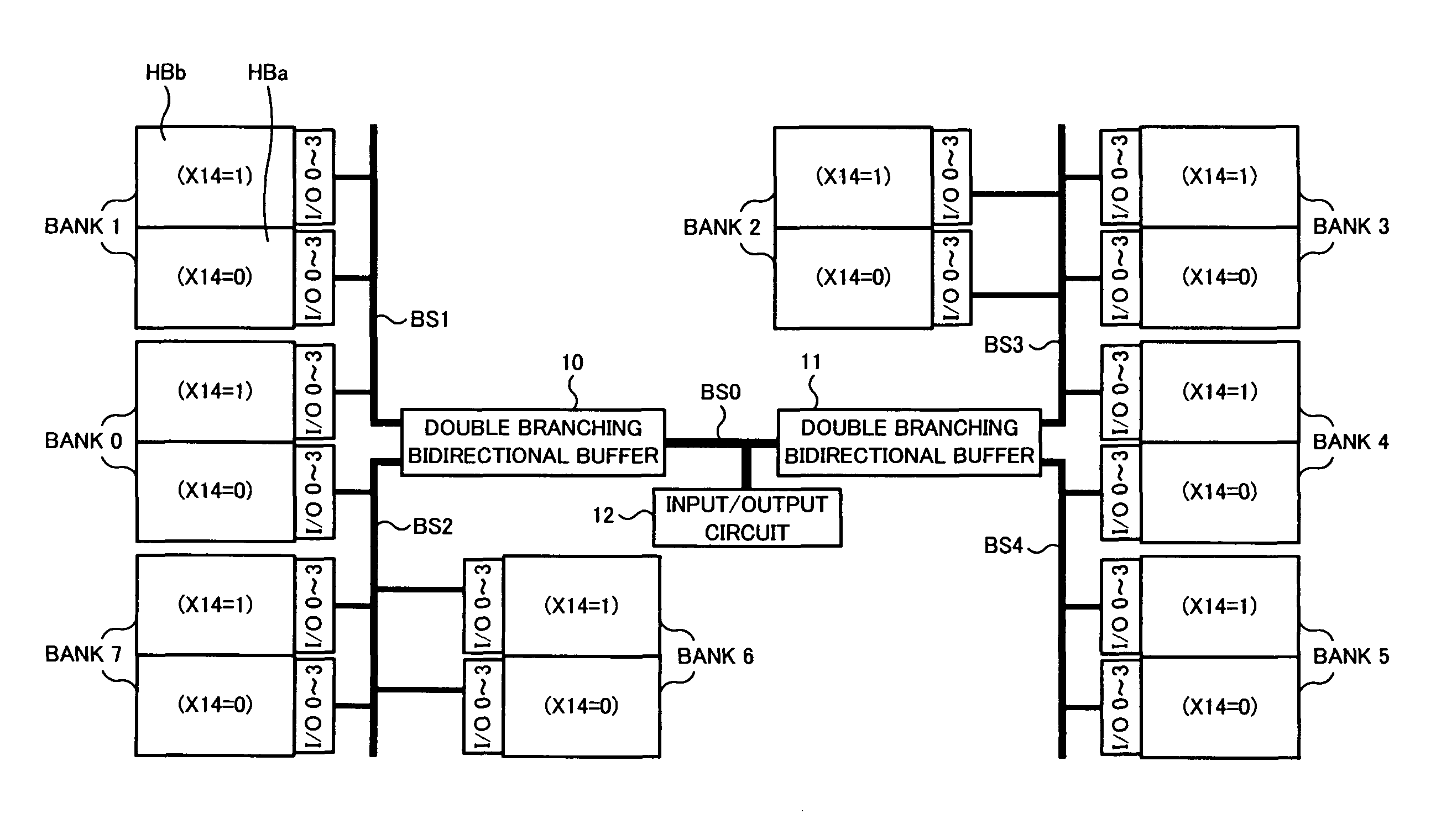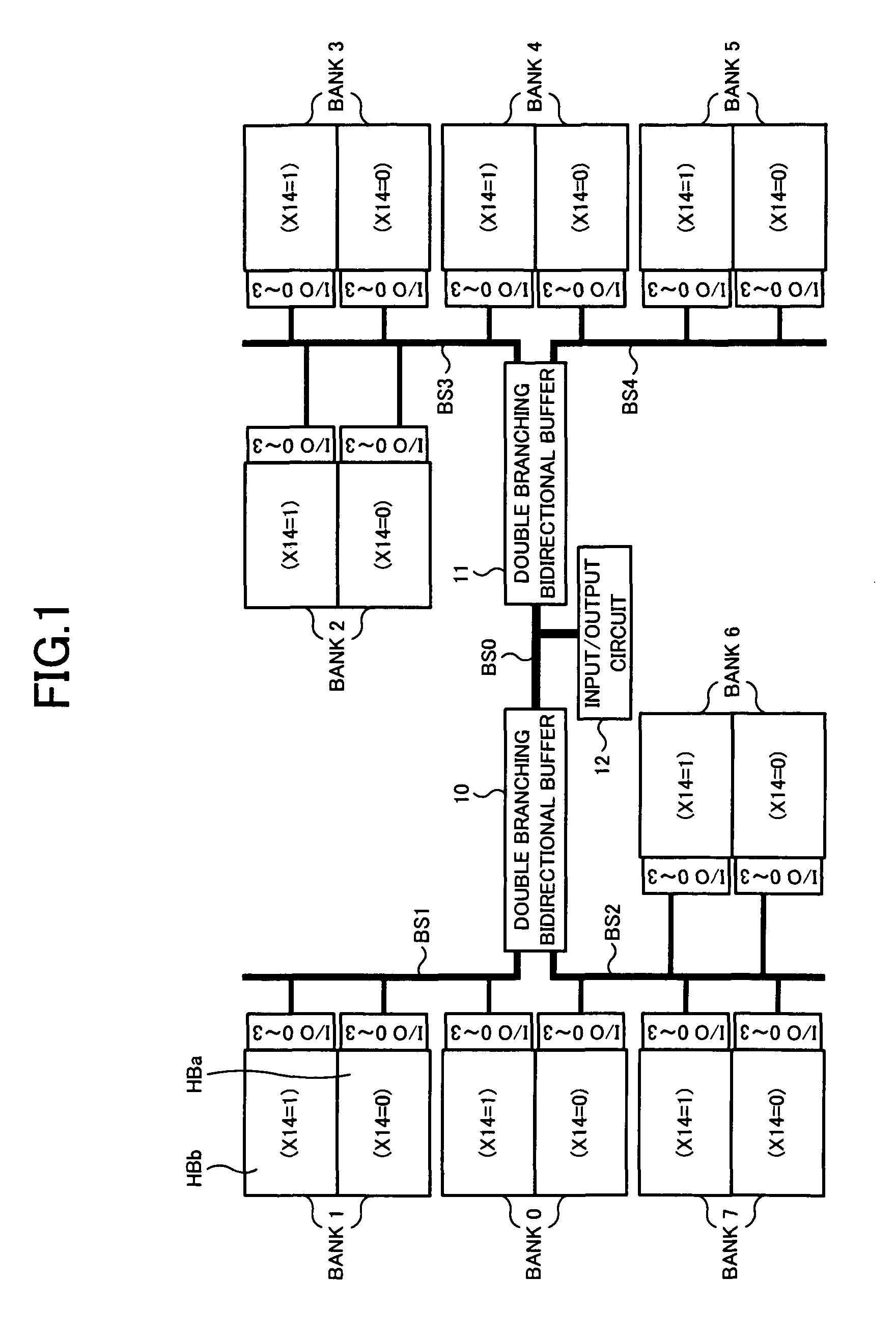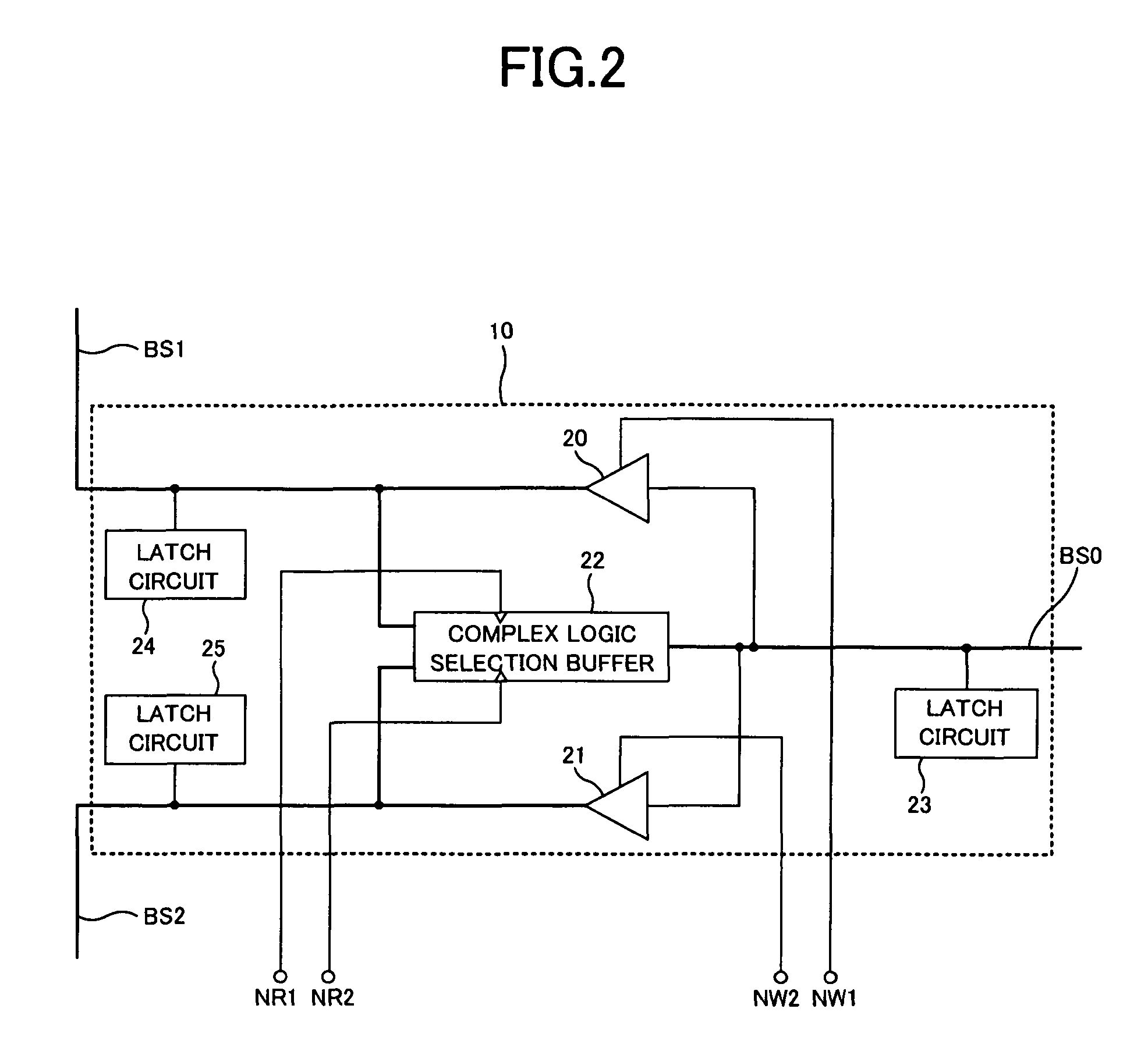Semiconductor memory device having a double branching bidirectional buffer
a memory device and semiconductor chip technology, applied in the direction of digital storage, instruments, electric digital data processing, etc., can solve the problems of increasing the area required for the wirings of the semiconductor chip, affecting the speed of data transmission, so as to reduce the chip area required for wiring and consumption current, and improve data transmission speed. , the effect of shortening the wiring length of the data bus
- Summary
- Abstract
- Description
- Claims
- Application Information
AI Technical Summary
Benefits of technology
Problems solved by technology
Method used
Image
Examples
first embodiment
[0040]FIG. 1 is a block diagram showing a principal part of a semiconductor device of a first embodiment. For example, DDR-SDRAM (Double Data Rate-Synchronous DRAM) can be used as the semiconductor memory device of the first embodiment. The semiconductor memory device of the first embodiment includes a memory cell array divided into a plurality of banks, two double branching bidirectional buffers 10 and 11, an input / output circuit 12, a common data bus BS0, and individual data buses BS1, BS2, BS3 and BS4. FIG. 1 shows an example in which the memory cell array is divided into eight banks 0 to 7. Actually, the semiconductor memory device includes many other components, which are omitted in FIG. 1.
[0041]In FIG. 1, each of the eight banks 0 to 7 has the same capacity, and is an independently accessible storage area. Each bank includes many memory cells formed at intersections of a plurality of word lines and a plurality of bit lines. When accessing an arbitrary memory address, a bank se...
second embodiment
[0074]FIG. 10 is a block diagram showing a principal part of a semiconductor device of a second embodiment. In the second embodiment, since basic components of the semiconductor memory device are common to those in the first embodiment, description of the components having the same numbers as those in FIG. 1 will be omitted. When comparing the second embodiment with the first embodiment, each of eight banks 0 to 7 is partitioned into half bank areas HBx and HBy of upper and lower parts, however a difference exists in that the address information (X14) is not given to the half bank areas HBx and HBy. For example, a case is assumed where the X address is used for other purposes and is not assigned to the address information in each bank. Meanwhile, I / O ports (0 to 3) as four-bit input / output lines are allocated to the lower half bank area HBx, and I / O ports (4 to 7) as the other four-bit input / output lines are allocated to the upper half bank area HBy, respectively, in each bank. Thus...
PUM
 Login to View More
Login to View More Abstract
Description
Claims
Application Information
 Login to View More
Login to View More - R&D
- Intellectual Property
- Life Sciences
- Materials
- Tech Scout
- Unparalleled Data Quality
- Higher Quality Content
- 60% Fewer Hallucinations
Browse by: Latest US Patents, China's latest patents, Technical Efficacy Thesaurus, Application Domain, Technology Topic, Popular Technical Reports.
© 2025 PatSnap. All rights reserved.Legal|Privacy policy|Modern Slavery Act Transparency Statement|Sitemap|About US| Contact US: help@patsnap.com



